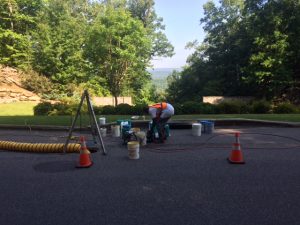 The first Chemical Grout applied to leaking infrastructure occurred in 1955. Since then, it has been used to stop leaks in manholes, underground utility vaults, tunnels, sewers, lift stations, wet wells, spillways, dams and many other applications all over the world to name a few. Recent studies have shown that some of the first repairs completed are still intact and still providing leak protection after 50+ years of service.
The first Chemical Grout applied to leaking infrastructure occurred in 1955. Since then, it has been used to stop leaks in manholes, underground utility vaults, tunnels, sewers, lift stations, wet wells, spillways, dams and many other applications all over the world to name a few. Recent studies have shown that some of the first repairs completed are still intact and still providing leak protection after 50+ years of service.
NASSCO studies have shown that trenchless Chemical Grouting is still the best, most cost-effective, long-term defense against groundwater infiltration into structurally sound sewer systems. Infiltration occurs when defects in below-grade structures like sanitary sewer lines, manholes, pump stations, process basins or storm drains allows groundwater to enter the system. This infiltration multiplies treatment costs and increases the flows in sanitary sewer systems causing sewer system overflows (SSO’s). Groundwater also carries silt, sand and other debris into the system, increasing the wear-and-tear on equipment and accelerating the need for cleaning and de-silting. Voids are often created around these structures and can lead to settlement, unstable foundations and roadbed failures.
Leaks in manholes are typically repaired by applying quick-set cement over the active leak prior to installation of a lining system. This repair is easily damaged due to failure of such patches, allowing groundwater to remain in the primary structure and cause weak bonds or future failure of the lining system.
Our process of sealing begins with injecting a 1-part hydrophobic polyurethane under pressure to the outside of the structure to fill voids, stabilize soil, seal leaks or stop infiltration. This allows for little or no chance of failure as the product will last indefinitely unless exposed to direct sunlight. And best of all, the back-pressure of the leak acts to pull the chemical grout into the structure. The product flows as a liquid to find all leaks and cracks and permanently seals them as it expands 20+ times its volume as a liquid. This not only stops leaks and infiltration but seals the structure, improves soil density and fills voids found outside the structure.
